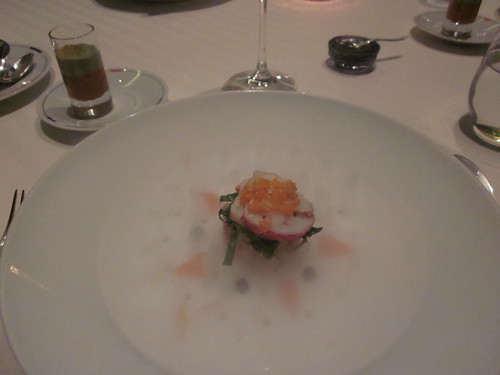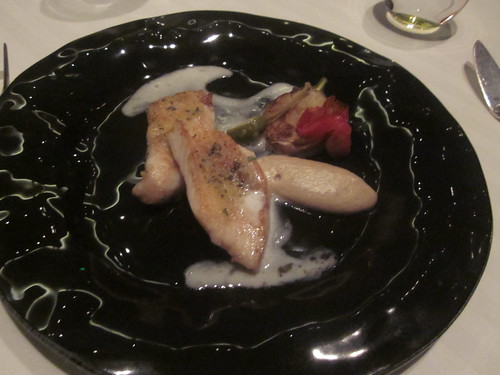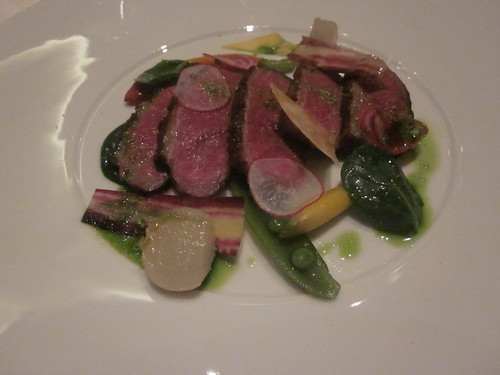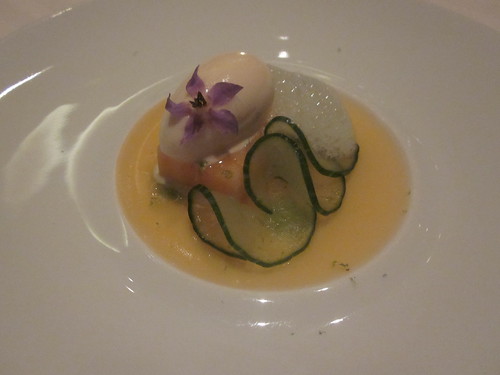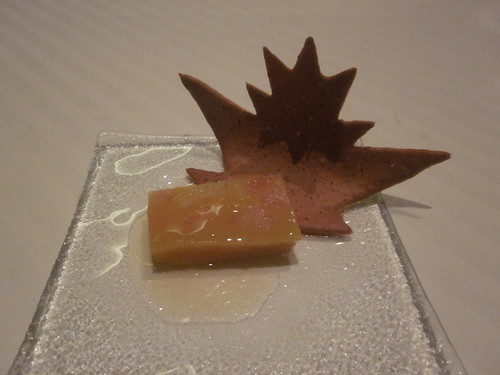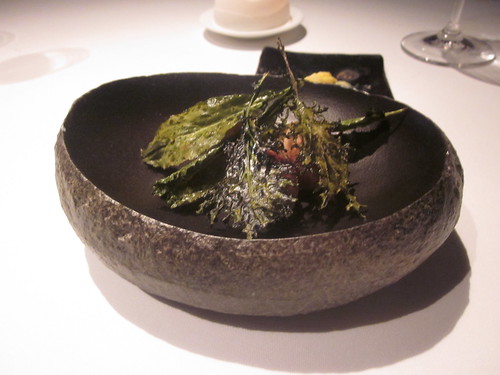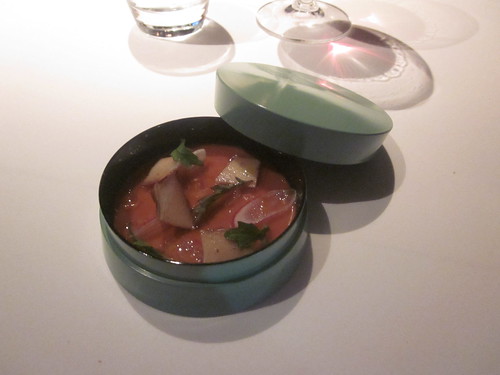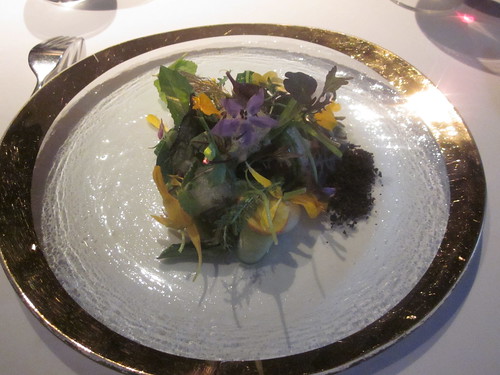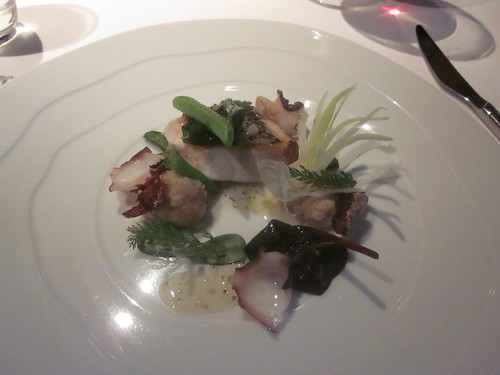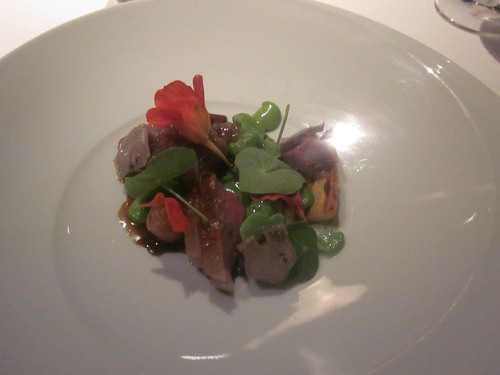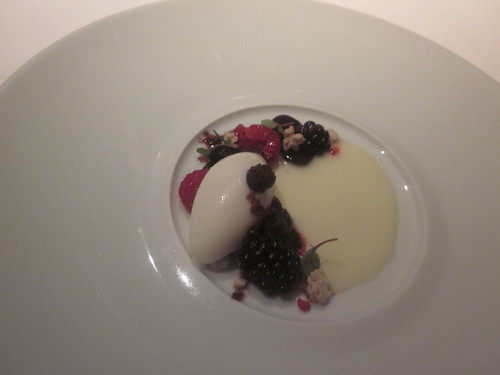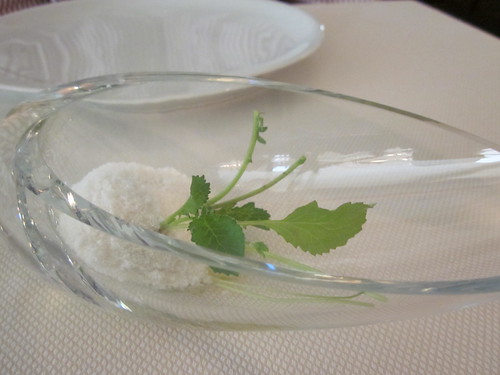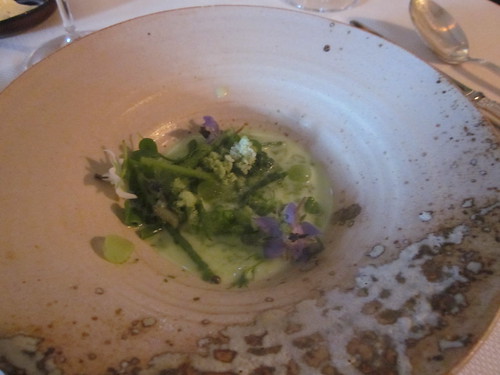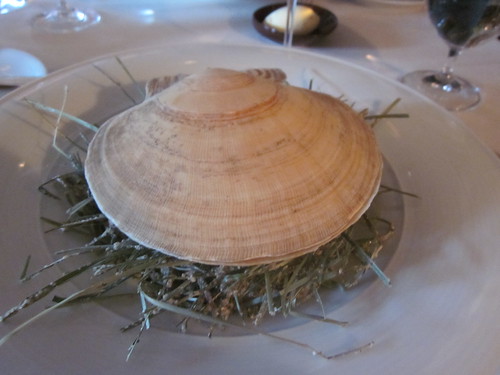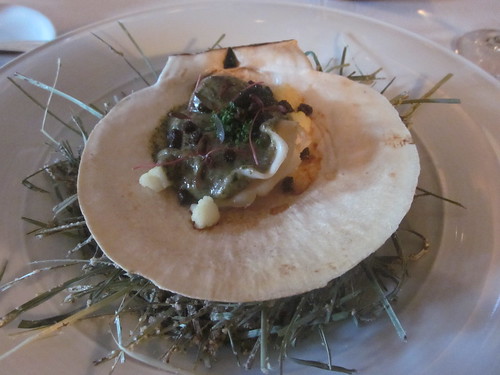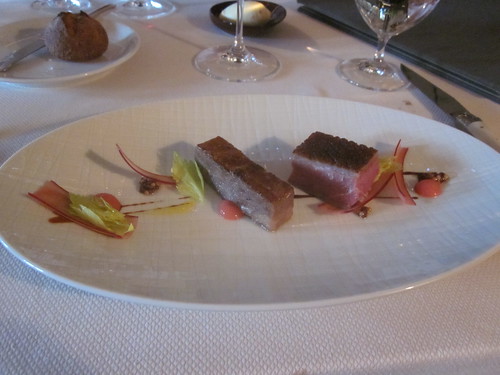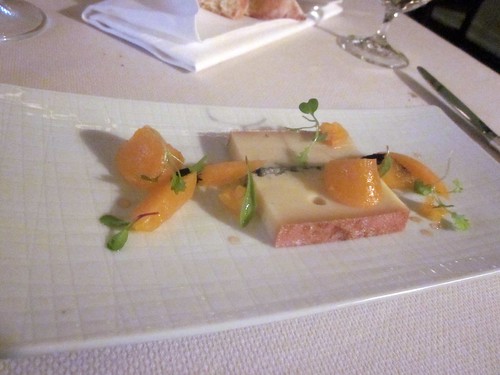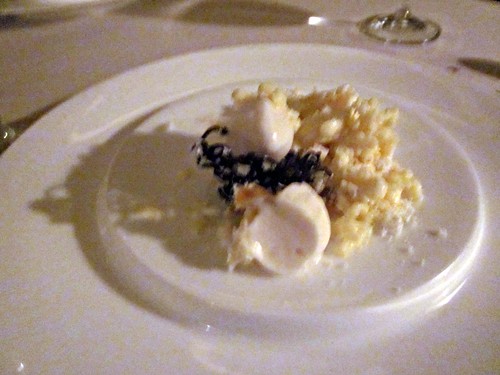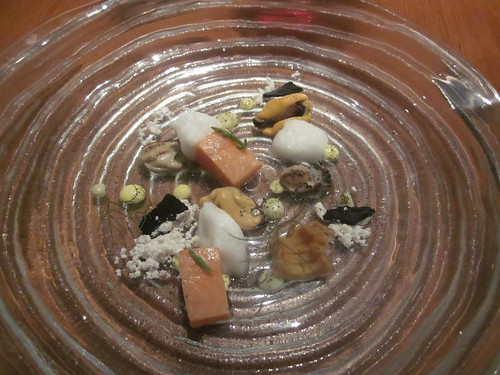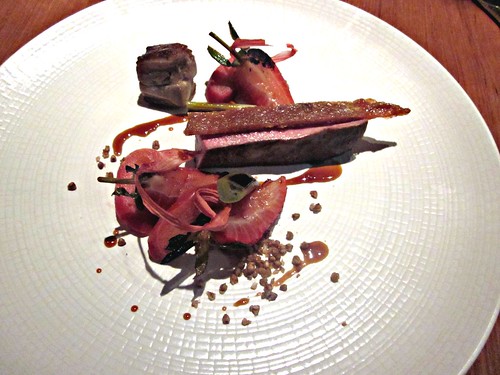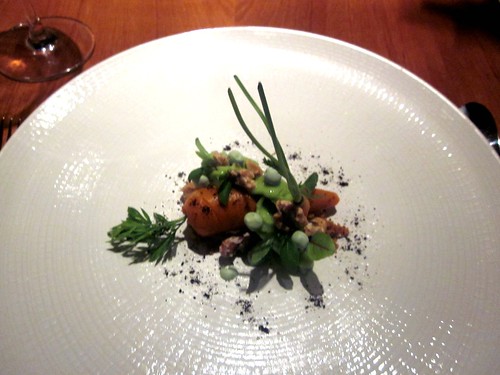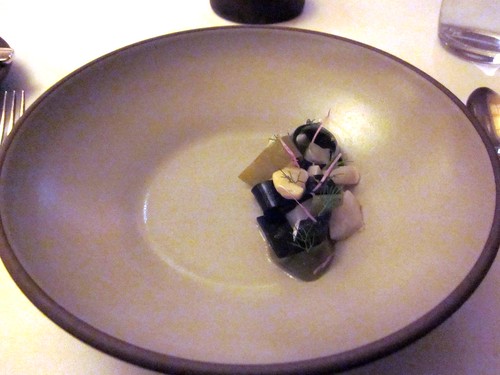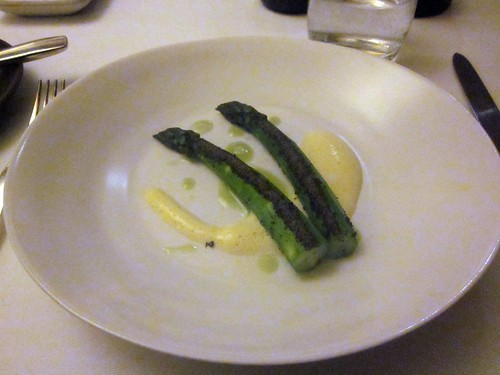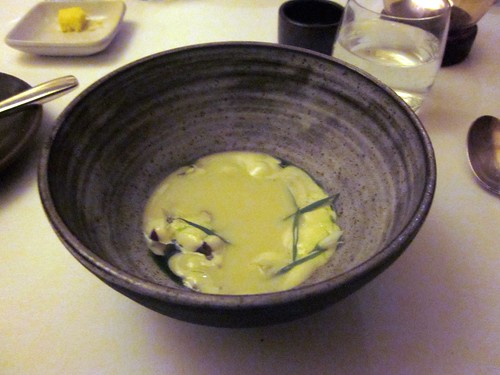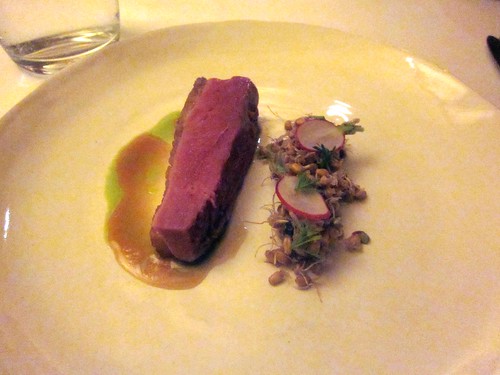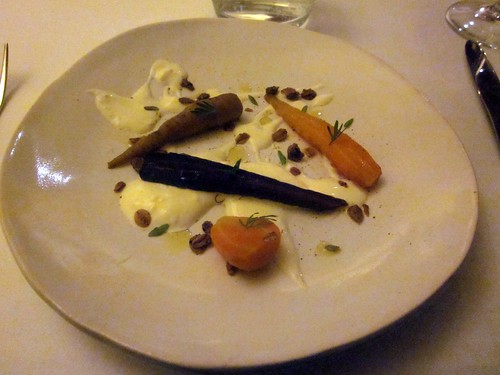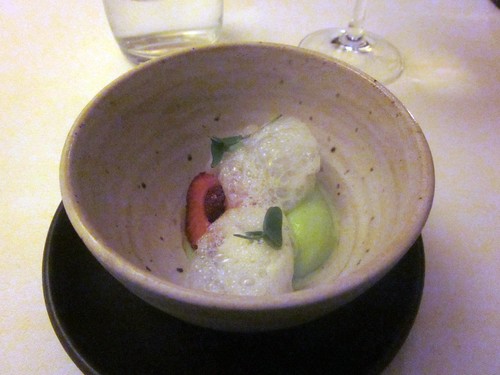Although I had committed myself to keeping up with my dining experiences, that resolution did not come to pass. So much to eat, so little time to write. In a year such as the one that is about to conclude, such is unfortunate. I have had splendid meals each month. I can hardly imagine a more exciting year of cuisine. This was a year in which the playful, silliness of molecular cuisine morphed into a firm and committed modernist cuisine, and in which even “old-fashioned” chefs shined. So, before describing one of these meals, I pay tribute to honor roll of chefs who are learning from the past, combining technique and ingredients, foraging when necessary, farming when possible, and otherwise selecting well. In 2011 I was based in San Francisco and Chicago, and managed to travel to Barcelona, Portland, Seattle, Vancouver, Phoenix, Los Angeles, Las Vegas, Asheville, Washington, and New York. This was the year I finally made it to El Bulli, just before the wire with additional meals at Celler de Can Roca, El Quim, and Cal Pep. In the Bay Area I ate at Coi, Atelier Crenn, Saison, Aziza, Manresa, Benu, Commis, Meadowood, and Manresa, and many others. And returning to Chicago there was Next, El Ideas, One Sister, Blackbird, and L20. And I cannot forget Blaine Wetzel’s breathtaking Noma-inspired cuisine at Willows Inn on Lummi Island off Bellingham, Washington and in the Northwest Canlis, Herbfarm, Castagna, and Le Pigeon. In New York, 11 Madison Park, Jean-Georges, and Marea. Add to this Guy Savoy, Lotus of Siam, Red Medicine, Curate, Kai, and Rhodes (Gary Rhodes restaurant on the Caribbean island of Granada), and it was quite a year.
But a blogger must focus. Excluding the forever memory of Ferran Adria in his now-shuttered redoubt in Roses, the meal that I will most treasure was at Town House in tiny, rural Chilhowie, Virginia. I ate at John and Karen Shields hideaway in 2010 and I was impressed. Many of the dishes represented the highest order of deconstructive cuisine, a lot of small bits on a plate: a busy cuisine. A few of the dishes were truly distinguished, indeed some of the best food of that year.
The meal was of such an order that I traveled four hours back to Chilhowie from my mountain eyrie in Western North Carolina this last August. I expected a fine meal, but nothing as remarkable as what I received. Something clicked in John Shield’s cuisine. It was as if he had figured out how to create dishes with culinary centers. Rather than a lot of happenings, each dish was composed as a dish. The meal in 2010 was among the best meals of the year; the meal in 2011 was among the best meals of my now lengthening life. Here was a chef who was in tune with the techniques of molecular cuisine and the ingredient-focused style of farm-to-table and foraged cuisine, but more than that he owned a personal vision (Karen Shields, his pastry chef and spouse, was on maternity leave, but clearly she had been working as hard in designing desserts: in 2010 the sweets were very fine in a deconstructive way, but this year they were stellar).
The amuse demonstrated how the current focus on foraging has affected cuisine. Chef Shields served rocks with seaweed glaze, adorned with adorable oyster leaves. The dish was sculptural and the flavor oceanic. I had never heard of oyster leaves, and until I tasted the creation I would have been labeled a skeptic. But the dish made clear how many wonders the Creator created. It was amazing amuse, an amusing amaze.

Dinner began by what I consider to be Chef Shields’ signature dish: Minestrone, although it is a signature that has been removed from his regular rotation. In this quiet, almost minimalist, soup, the chef prepares little strips of root vegetables, each separately poached and rolled into gentle cylinders. These jewels are served in a cool herbal broth. Words can not do this dish justice. And if a picture is worth 1000 words, a taste must be worth 1000 pictures. It is as brilliant a dish as I can imagine: not rich, not fatty, but infused with flavor.
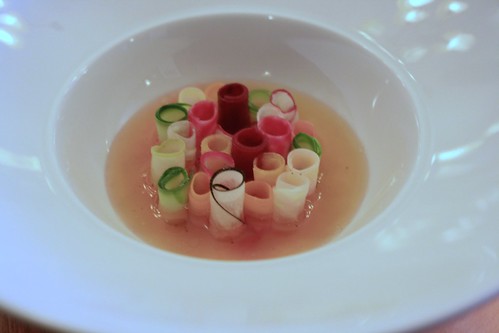
The next plate is another triumph of the foraging mind: “flowers,” served with artichoke and a leek emulsion. Clearly Chef Shields has been influenced by the Noma crew but relies upon local ingredients. The colors and textures elevate what is a grounded salad.
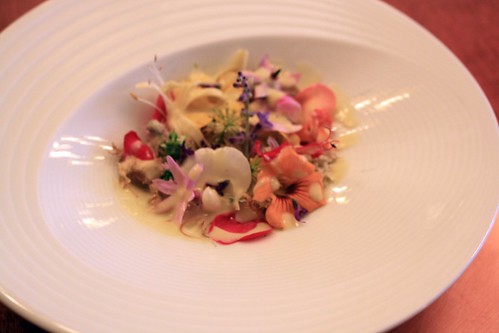
We returned to a soup/salad: a “gazpacho” of summer foliage with shiso, green tomato, green bean leaves, pickled coriander, and zucchini. I confess a weakness for shiso; my leg goes all tingly when these leaves appear. This again reminds us of the many flavors we can select if we only took the effort. This was a salad with a bit of liquid: delight on the fork and in the spoon.

Barbequed eggplant with lemon, basil, black garlic and ashes of smoked mussels was the highlight of the meal. It tasted so much better than it reads (barbequed eggplant, ashes of mussels?). It was a triumph of technique, a triumph of the theory of taste. In contrast to most dishes, this plate didn’t appeal to the eye, but fully, dramatically, to the tongue. The idea that eggplant and lemon, garlic and mussel ash might mix was an insight that I would have missed, and I bow to Chef Shields’ vision.
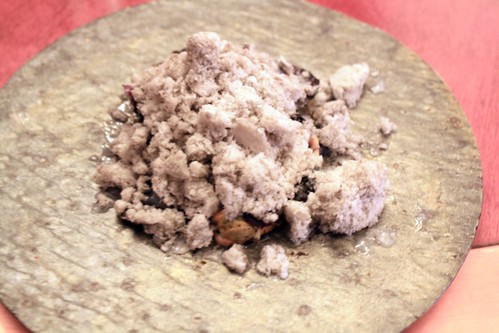
Sweet corn, chicken, and lovage moved us toward protein. Here was a focused, textured, sweet dish, and called for more. It was a dish of the Southern summer. It was a pleasure throughout.
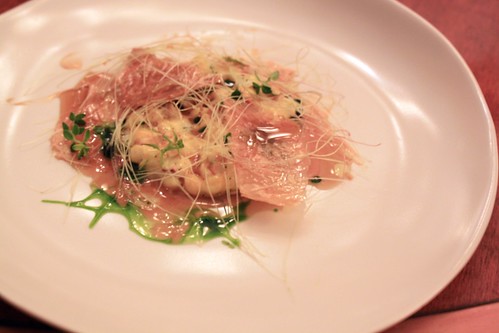
I recall peekytoe crab in brown butter and butter whey with onions, shellfish cream, lime, crisp scallop and pork stock mostly for the textures and the construction. Perhaps the crab could have been more dominant, but the dish was so beautifully composed and so touched with enchantment in each bite that complaints seemed irrelevant.
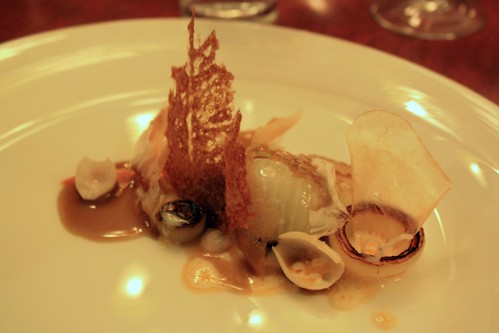
Turbot with fresh pine and anchovy cream reminds one that some chefs can work with all four culinary senses (sound to the side): vision, texture, smell, and taste. This fish dish scored on each. Perfectly cooked fish with a crispy skin, startlingly arranged with a powerful twist from pine and anchovy. By this time we understood that the meal was so glorious that no quibbling was possible.
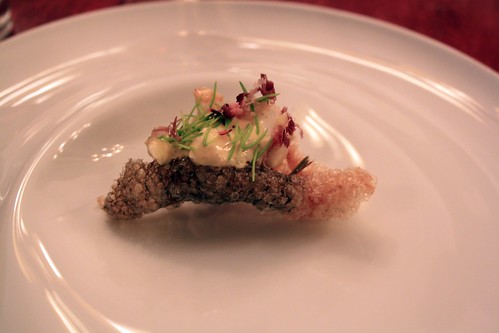
Chef Shields is entitled to his little jest: Squid Risotto. Imagine squid cut as Arborio grains, served with the traditional rich cream sauce. It was not my favorite dish last year, but it is now a tradition. Perhaps it plays tribute to the jests of Grant Achatz or Hugh Blumenthal. Aside from the humor, it is ever-so-tender squid served with lots of cream.
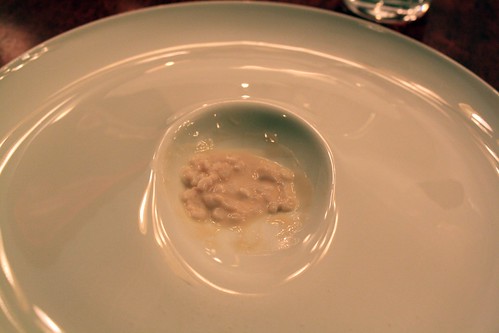
Beef cheek (and tongue) . . . Pastoral is served with skim milk, toasted garlic, horseradish, grasses, and hay. A gastronomic tribute to the cow at both ends. Again this is a heroic vision of foraged food, a gorgeous and delicious plate. It is as good a big, land protein as any of the year. Stunning.
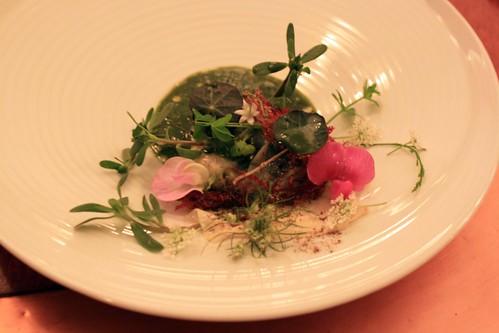
I am a sucker for lamb, for beets, and for licorice, and this dish hit the trifecta. Chef Shields served lamb shoulder with beets smoked and dried, licorice, and beet Bolognese. The flavors were so remarkably well matched that I wish that the serving might have been multiplied. Licorice and beets have a certain mystical power that bring out the flavor of all that they touch, and, added to this, here was a dish of technique, so much work to create this little masterpiece.
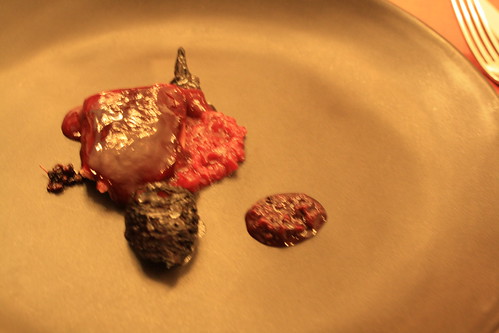
For our first dessert we were served a liquid chocolate bar with an ice cream of burnt embers, sour yogurt cotton candy, tomato and sugar, I admired how the embers reprised the mussel ashes of the early evening. And unlike the desserts of 2010 this was a more highly focused dessert: a triumph of technique.
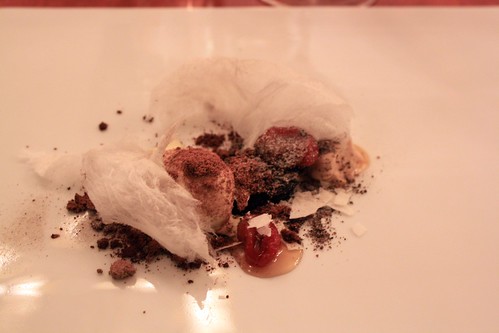
My favorite dessert (Of the year? Of my life? Of eternity?) was cantaloupe and toasted faro with wild sassafras and ginger, carrots, turmeric root, and Tonka bean. When one speaks of a dish as a symphony, this dish is what is meant. With the luscious, sensual, sweet late summer melon, Karen Shields’ dish was thoroughly indulgent and passionate. To my pleasure I had an opportunity in October to reprise the dish at a special supper sponsored by the James Beard House in Chicago. It was the best dish of that evening.
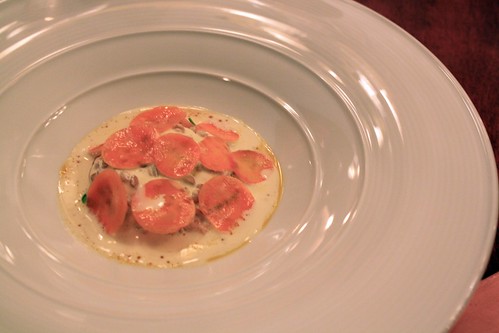
Finally there was Broken Marshmallows: cucumber, softly whipped cream, green strawberries and geranium. Like so many dishes before, it was a tribute to the land: farmed and found. An unexpected and wise mixture of tastes and textures.
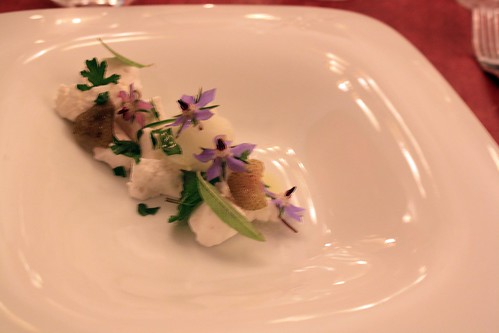
And so this concluded a profound dinner of a profoundly culinary year. John and Karen Shields are creating a cuisine that builds on that of Trotter, Achatz, and Redzepi, but is transformed through their own vision. This meal was as close to perfection as any that I have eaten in quite a while, and is certainly more than could ever be expected from an exit off Interstate 81 rolling through the verdant hills of southwestern Virginia. But plants are everywhere and genius is to be found in unexpected burgs.
Town House
132 East Main Street
Chilhowie, VA 24319
276-646-8787
http://www.townhouseva.com
